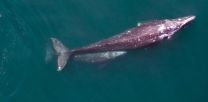The new normal? Addressing gun violence in America
An article spotlight
2015-05-28
(Press-News.org) Article Spotlight features summaries written in collaboration with authors of recently published articles by the Journals Program of the American Psychological Association. The articles are nominated by the editors as noteworthy to the scientific community.
Mass shootings have a significant impact on our individual and collective psyche, especially when they happen at schools. Despite the fact that children die every day from gun violence, school shootings upset us in ways that are difficult to comprehend. In our minds, schools serve as safe havens for children. When that image is shattered, the unpredictability and randomness of such heinous acts leave us wondering if anywhere is safe anymore. Thus, the shock and horror expressed following these events is not surprising.
Unfortunately, our individual and communal response to such events is often knee-jerk. We react out of fear rather than thoughtful consideration of why such events occur and how our responses may prevent or accelerate re-occurrence. Without such understanding, we cannot develop effective solutions.
The May issue of the American Journal of Orthopsychiatry includes a set of commentaries that seek to help us better understand responses to gun violence, challenge some of the typical policy responses to such events, and offer constructive strategies for preventing gun violence.
In the first commentary, Kristin A. Goss (2015) highlights an exception to the old adage that when it comes to guns, legislators are incapable of action: at the federal and state levels, laws have been enacted that were designed to regulate access to guns by people with mental illness and to support programs to reduce gun violence within that population. Heath J. Hodges and Mario J. Scalora (2015) further challenge the presumption that mental illness is causally tied to gun violence. Building on existing research, Hodges and Scalora offer scientifically grounded and practical policy- and practice-oriented strategies for preventing firearm violence. They offer government solutions (e.g., basing prohibitions on dangerousness instead of mental illness and extending regulation of firearm acquisition to private transactions and Internet sales) and clinical interventions, such as employing threat assessment strategies.
Dewey Cornell (2015) expounds upon the threat assessment strategy and provides a strong argument for the use of such an approach in schools. Cornell describes how the strategy of behavioral threat assessments - a process of evaluating individuals who threaten to harm others to determine whether their behavior demonstrates a serious intent to carry out a violent act - promotes the consideration of the context and meaning of the student's behavior. Indeed, it re-focuses the conversation on creating supportive environments for children and youth.
Carol W. Runyan, Talia Brown, and Ashley Brooks-Russell (2015) also draw attention to the need for more proactive and preventive approaches to gun violence. They discuss how the debate on gun violence resulting from mass shootings in schools frequently omits the role of firearms in suicide, despite the fact that mass shootings usually involve suicidal behaviors. After discussing the myths and biases that play into the inadequate attention afforded to suicide as a preventable public health issue, Runyan and colleagues propose a framework for the prevention of firearm suicides and call for greater recognition of behavioral health as part of health care.
In the final commentary, David Hargrove and Roland Perdue (2015) argue that to address gun violence, we must address the fear and distrust that permeates society. Their commentary suggests that we need to invest in approaches that are preventive and that seek to build community, instead of policies and practices that further exclude and isolate individuals from communities.
The editors and authors hope that this set of commentaries will provide a strong basis for having a well-reasoned conversation about our civic and moral obligation to ensure "a new normal" whereby neighbors look out for one another, institutions promote relationships and belonging, and resources are available to individuals during times of distress and isolation. Indeed, once we begin to address the fear that is guiding the development of misinformed policy and weakening connections among individuals and communities, we begin to chip away at the culture of violence in our society.
INFORMATION:
McLeigh, J. D. (2015). The new normal? Addressing gun violence in America. American Journal of Orthopsychiatry, 85(3), 201-202. http://dx.doi.org/10.1037/ort0000072
ELSE PRESS RELEASES FROM THIS DATE:
2015-05-28
One recent spring day, John Durban, a NOAA Fisheries marine mammal biologist, stood on the California coast and launched an unmanned aerial vehicle into the air. The hexacopter--so called because it has six helicopter-type rotors--zipped over the ocean and hovered above a gray whale mother and her calf. The pair was migrating north from their calving grounds off Baja California, Mexico, to their summer feeding grounds in the Arctic.
NOAA Fisheries scientists have stood at this point of land each year for the past 22 years, binoculars in hand, to estimate the number of ...
2015-05-28
Life-threatening liver inflammation can be caused by excess alcohol, fatty foods, toxins, as well as viral, bacterial, and parasite infections. A study published on May 28th in PLOS Pathogens reports that a specific immune cell type in the liver can dampen the immune response, reduce inflammation, and protect against liver damage.
Alain Beschin, from the Vrije Universiteit Brussel, Belgium, and colleagues studied the immune response to trypanosome parasites in mice, where they frequently cause liver inflammation and failure. They focused on the role of monocytes, immune ...
2015-05-28
The human sensory systems contend with enormous diversity in the natural world. But it has been known for a long time the brain is adapted to exploit statistical regularities that nonetheless arise amongst this diversity. Research publishing this week in PLOS Computational Biology reports that established statistical distributions of visual features, such as visual contrast, spatial scale and depth, differ between dark and bright components of the natural world.
For scientists Emily Cooper and Anthony Norcia, gaining a more detailed description of statistical regularities ...
2015-05-28
Retrograde amnesia is the inability to recall established memories. In humans, amnesia is associated with traumatic brain injury, Alzheimer's disease, and other neurological conditions. Whether memories lost to amnesia are completely erased or merely unable to be recalled remains an open question. Now, in a finding that casts new light on the nature of memory, published in Science, researchers from the RIKEN-MIT Center for Neural Circuit Genetics demonstrated in mice that traces of old memories do remain in the amnestic brain, and that the cellular pathways underlying them ...
2015-05-28
Elevated plasma triglyceride level is considered a risk factor for type-2 diabetes, but new findings suggest that a genetically-elevated triglyceride level is associated with protection against type-2 diabetes. Yann Klimentidis, an Assistant Professor at the Mel and Enid Zuckerman College of Public Health at the University of Arizona, and colleagues found that triglyceride-increasing alleles are associated with decreased type-2 diabetes incidence. Their findings were published recently in PLOS Genetics.
Building on previous studies that hinted to the same association, ...
2015-05-28
Dany Gaillard and colleagues at the University of Colorado Anschutz Medical Campus have discovered a key molecular pathway that aids the renewal of taste buds, a finding that may help cancer patients suffering from an altered sense of taste during treatment. Their findings were published recently in the journal PLOS Genetics.
"Many cancer drugs which circulate throughout the entire body, will target a tumor but in the process affect healthy cells," said the study's senior author Linda Barlow, a professor of cell and developmental biology at University of Colorado Anschutz ...
2015-05-28
AURORA, Colo. (May 28, 2015) - Researchers at the University of Colorado Anschutz Medical Campus have discovered a key molecular pathway that aids in the renewal of taste buds, a finding that may help cancer patients suffering from an altered sense of taste during treatment.
"Many cancer drugs, which circulate throughout the entire body, will target a tumor but in the process affect healthy cells," said the study's senior author Linda Barlow, PhD, professor of cell and developmental biology at CU Anschutz. "That in turn will alter a person's sense of taste leading to ...
2015-05-28
CAMBRIDGE, MA -- Memories that have been "lost" as a result of amnesia can be recalled by activating brain cells with light.
In a paper published today in the journal Science, researchers at MIT reveal that they were able to reactivate memories that could not otherwise be retrieved, using a technology known as optogenetics.
The finding answers a fiercely debated question in neuroscience as to the nature of amnesia, according to Susumu Tonegawa, the Picower Professor in MIT's Department of Biology and director of the RIKEN-MIT Center at the Picower Institute for Learning ...
2015-05-28
This news release is available in Japanese.
Long-held social biases can be reduced during sleep, a new report suggests. It adds further support to recent research that has shown that memories can be selectively reactivated and strengthened during slumber. Scientists have known that sleep boosts memory formation by resuscitating faint neuron activity shaped during earlier periods, when an individual was awake. This process can be experimentally stimulated by giving a sleeping individual cues related to an earlier period of learning. Now, Xiaoqing Hu and colleagues ...
2015-05-28
This news release is available in Japanese. Xiaochun Qin and colleagues have provided a high-resolution crystal structure of a plant protein supercomplex critical to photosynthesis, shedding new light on how this extremely effective solar energy converter achieves its impressive performance. The photosynthesis of many plants relies upon the large light-harvesting complex I (LHC1), which surrounds photosystem I (PSI) and captures sunlight. LHC1 is able to transfer the energy it absorbs to the PSI core, where it is converted into chemical energy with close to 100% efficiency. ...
LAST 30 PRESS RELEASES:
[Press-News.org] The new normal? Addressing gun violence in America
An article spotlight


